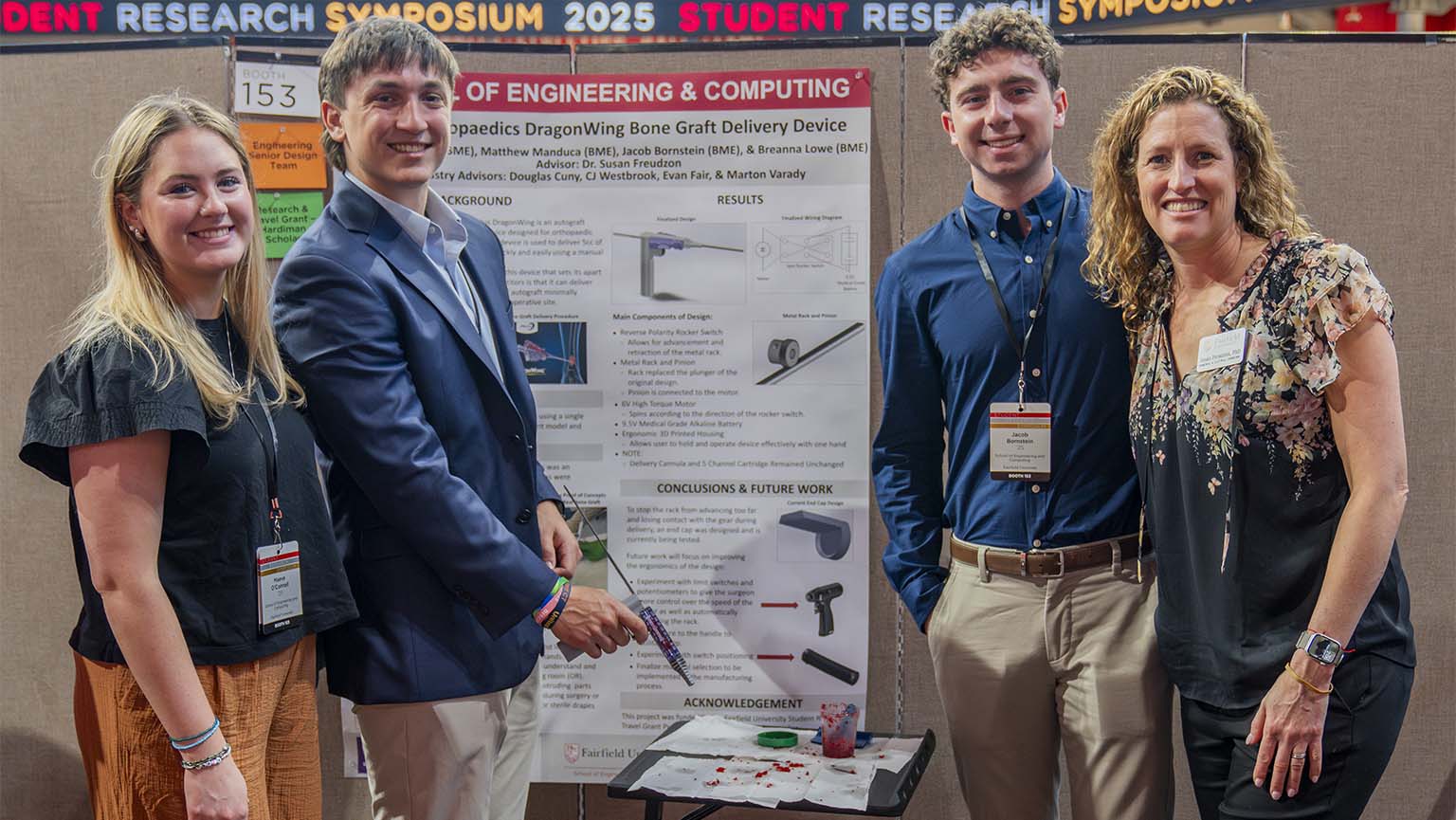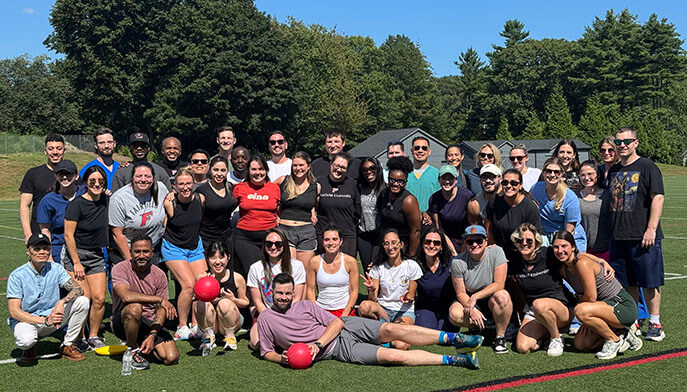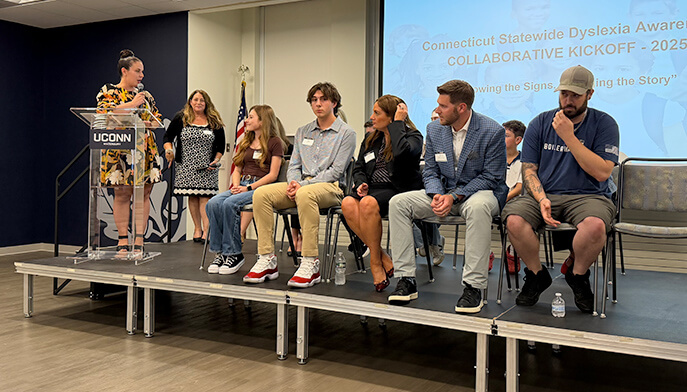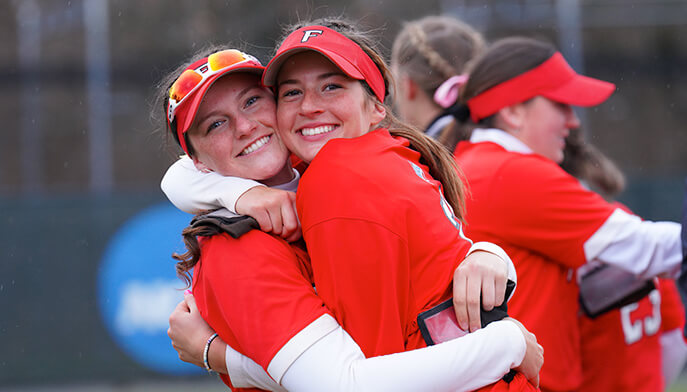During the three-day conference, the students competed in the Senior Design Poster Competition; they presented and networked with students, faculty, industry professionals, and research leaders. Their project took first place in the Biomechanics & Robotics track.
Maeve O'Connell described how the Senior Design Project team partnered with Avitus Orthopaedics, a division of Zimmer Biomet, to redesign their DragonWing bone graft delivery device. “This device is used by surgeons in ORs to deliver high volumes of bone graft to a patient's injury site," she said, "such as during ankle fusions.”
The original DragonWing device required two hands to operate: one to hold the device and another to manually push the graft material, while a second person was required to handle the arthroscope for visibility. “This made it a three-handed, two-surgeon operation,” O’Connell said. “We were tasked with making the device capable of being used with only one hand, as this would decrease the number of surgeons required and simplify the procedure.”
The Fairfield team designed an innovative solution. “We ended up motorizing the device so that the bone graft could be delivered by simply flicking a switch, eliminating the need for two hands,” said O’Connell.
The redesigned device features a motorized rack-and-pinion system that allows surgeons to control bone graft delivery with one hand, improving both precision and efficiency. Using SolidWorks, the team produced a 3D-printed prototype compatible with existing DragonWing components. The device was successfully tested with both synthetic and cadaveric bone graft materials, demonstrating its potential to reduce procedure times and improve surgical outcomes.
“We didn't find out that we won until a little while after the conference, but we were overjoyed,” said O’Connell. “Seeing all the hard work we put into this project through to this award felt incredible, and it reminded me that we can accomplish so much during our time here at Fairfield. We're given so many fantastic opportunities — working alongside our incredible faculty and industry mentors taught us valuable lessons we’ll carry into our careers.”
The students' research was supported by the Research & Travel Grant: Hardiman Scholars Fund. Learn more about the School of Engineering and Computing.




